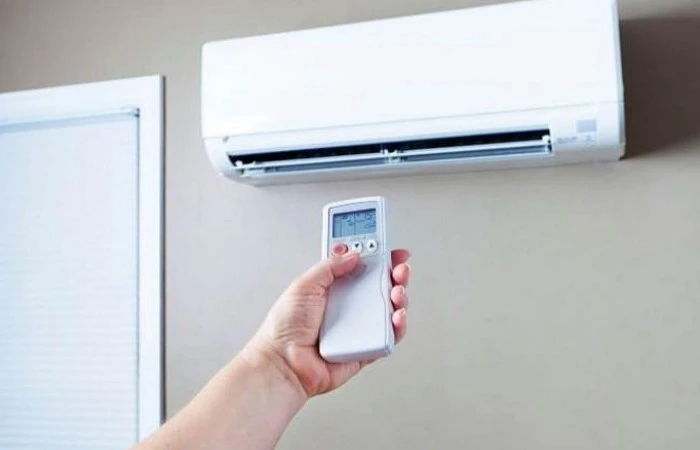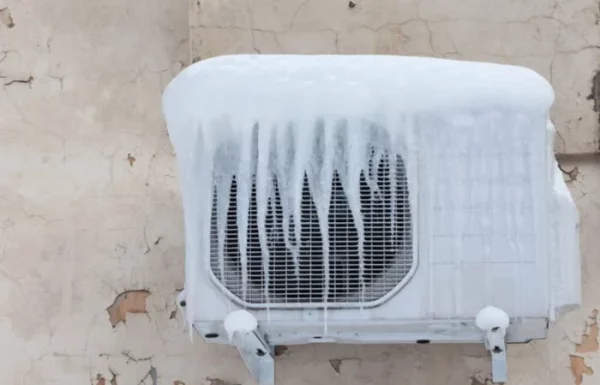How to Optimize Your AC Performance in Winter?
Should You Turn On Your AC in Winter?
Yes, the short answer is indeed yes. It is essential to switch on this appliance during the winter months, even if your AC is not the reversible type. Many people are surprised to discover that they need to use this appliance in winter because it is primarily associated with cooling rooms. However, despite not needing cooling during winter, you can still benefit from using the AC.
For instance, when the indoor air becomes stuffy due to running the heating system, you can turn on your AC to alleviate this issue. The AC allows you to regulate the temperature of the indoor air, providing a solution for the stuffiness.
Which Mode is Best for AC in Winter?
AC units typically operate in different modes depending on their type and model. These modes are specifically designed to optimize the unit’s performance based on external conditions and the desired outcome.
During winter, the dry mode is the recommended option for running your AC. This mode is specifically tailored to decrease the humidity level in the room, particularly when there is an excessive amount of moisture present.

What is the Ideal Temperature Setting for AC in Winter?
According to energyrates.ca, the ideal temperature for your home in the winter is 20 degrees Celsius, which offers both comfort and energy efficiency. It’s a good benchmark to follow when running your AC during winter, but remember to consider the temperature and conditions specific to your region.
Why does the AC temperature matter? Well, think about it. If your AC unit isn’t set at the right temperature, it has to work harder to reach the desired indoor air temperature. This extra effort leads to higher energy consumption and potentially increased electricity bills.
While the changes in energy efficiency may seem small, they can accumulate over time, especially if you rely on your AC frequently during the summer months. Ideally, having a variety of settings in your unit gives you more flexibility to choose the most suitable mode based on the prevailing conditions.
However, there are more benefits to consider when selecting the best mode for your AC in winter. Here are a few advantages you can enjoy:
- Enhanced comfort in your home during the winter season.
- Improved indoor air quality, which contributes to your family’s health and well-being.
- Optimal energy efficiency for your home during winter, reducing unnecessary energy consumption.
- Lower electricity bills, as efficient operation translates into cost savings.
Don’t forget to prioritize regular maintenance for your AC system in Hamilton, ON to ensure its continued performance and longevity.
Will Turning The AC On During Winter Make It Prone To Damage?

- Overheated Compressor: The compressor generates more heat as it operates. Since the ambient temperature is very low, the compressor has to work harder to produce heat. This increased workload can cause the compressor to become overworked and overheated.
- Frozen Cooling Coils: When you switch on the AC unit, condensation forms on the cooling coils, which explains why water drips from the unit’s exterior. During winter, these cooling coils can freeze, potentially causing significant damage to the unit itself. The outdoor unit is also susceptible to damage once it becomes frozen.
Tips for Max Efficiency for Your AC
To optimize the performance of your AC during winter and ensure maximum comfort, it’s important to know the ideal mode to use. Additionally, there are several steps you can take to make your unit work smarter without compromising its energy efficiency.
- Firstly, ensure that your home is properly insulated. This will help retain warmth and prevent any unnecessary heat loss. Check for any air gaps in your doors and windows, and if you find any, seal them up to keep the cold air from entering your home.
- Consider investing in double or triple-glazed windows, as they provide better control over indoor temperature and reduce heat transfer. This will help maintain a comfortable environment while using your AC efficiently.
- Don’t forget to clean the AC air filters on a regular basis. This will improve the unit’s airflow and ensure optimal performance throughout the winter months.
Keeping unused doors shut is another simple yet effective step to prevent heat loss and maintain a consistent temperature in your home. - Finally, it’s recommended to schedule regular AC services for your unit in Hamilton, ON to ensure high energy efficiency. By having professionals inspect and maintain your AC system, you can maximize its performance and minimize energy consumption.
By following these guidelines, you can optimize your AC’s performance during the winter, enjoy maximum comfort, and achieve efficient energy usage.
Get Your AC Unit Serviced Before Winter
To maintain your AC in optimal condition throughout the year, proper maintenance is essential. Yet, the winter months pose distinct challenges with extreme temperatures that can increase the likelihood of damage.
It is imperative to carry out routine maintenance and servicing before winter sets in. This step is crucial to guarantee the AC unit’s peak performance and prevent the need for expensive repairs down the line. By conducting these tasks in advance, you can optimize your AC’s efficiency and avoid any potential issues. Contact us today to prepare for the winter!










